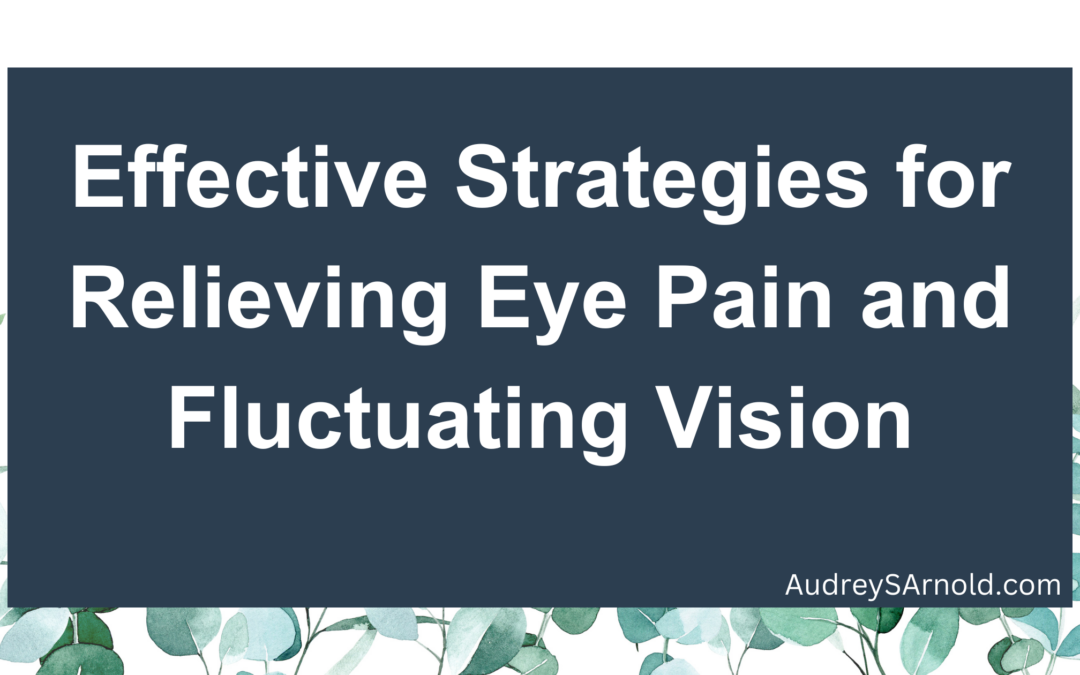Experiencing pain around your eyes, along with fluctuations in eyesight, can be concerning. While these symptoms may be caused by a variety of factors, understanding the underlying issues is crucial for effective treatment. In this article, we will explore potential causes of eye pain and vision changes, and provide suggestions for alleviation and management.
Common Causes of Eye Pain
1. Muscle Strain
Eye strain, also known as asthenopia, can occur due to prolonged activities such as reading, screen use, or any task that requires intense focus. Symptoms include discomfort around the eyes, dry eyes, and blurred vision. Muscle fatigue around the eyes can lead to pain that feels like a dull ache.
2. Sinusitis
Sinus infections can cause inflammation and pressure around the eyes, leading to pain and potentially impacting vision. The sinuses are located near the eyes, and when they become congested, the pressure can create discomfort.
3. Allergic Reactions
Allergies, whether seasonal or related to dust mites, mold, and pet dander, can result in itchy, swollen eyes and discomfort. Allergic reactions can also lead to conjunctivitis, causing redness and irritation.
4. Migraines
Migraines often come with visual disturbances known as aura, alongside throbbing pain, which can manifest around the eyes. Migraines can significantly impact eyesight and may cause temporary vision changes.
5. Dry Eye Syndrome
Insufficient tears result in dry, irritated, and painful eyes. This condition is often exacerbated by environmental factors or prolonged screen time. Symptoms may include burning, itchiness, and blurred vision.
6. Eye Infections
Conditions such as conjunctivitis (pink eye) or bacterial infections can lead to pain, redness, and tearing. Infections may worsen, affecting eyesight if left untreated.
7. Underlying Health Conditions
Eye pain and vision changes could be indicative of broader health problems such as high blood pressure, diabetes, or multiple sclerosis. These conditions may lead to complications that affect eye health.
What Can Help?
1. Rest Your Eyes
If muscle strain is suspected, taking regular breaks from screens and focusing activities can alleviate discomfort. The 20-20-20 rule can be helpful: every 20 minutes, look at something 20 feet away for 20 seconds.
2. Apply Warm Compresses
For sinus pain or inflammation, warm compresses on the face can help reduce pressure. This is soothing and can improve blood circulation in the area.
3. Stay Hydrated and Use Artificial Tears
Ensuring proper hydration can combat dry eye syndrome. Additionally, using lubricating eye drops can provide relief from dryness and irritation.
4. Manage Allergies
If allergies are a likely culprit, over-the-counter antihistamines can alleviate symptoms. It may also help to reduce exposure to allergens in your environment.
5. Consult a Medical Professional
If symptoms persist or worsen, seek medical advice. An eye care specialist can conduct a thorough examination to diagnose the underlying cause accurately. Early intervention is key to preventing complications.
6. Adopt Healthy Lifestyle Choices
Regular exercise, a balanced diet rich in vitamins (especially A, C, and E), and ample sleep can promote overall eye health. Limiting screen time, wearing sunglasses outside, and taking dietary supplements that support eye health may also be beneficial.
7. Consider Vision Correction
If vision changes are persistent, it might be time to evaluate whether you need glasses or a change in prescription. Regular eye exams can help monitor your vision health.
Conclusion
Pain around the eyes and fluctuating vision can be distressing, but understanding potential causes is the first step towards relief. From muscle strain and allergies to underlying health conditions, there are numerous factors at play. Employing basic self-care strategies, seeking professional advice, and maintaining healthy habits can significantly enhance your eye comfort and overall vision health. If you’re unsure about your symptoms or how to address them, never hesitate to reach out to a healthcare provider for guidance. Your eyesight is precious, and addressing any discomfort promptly is essential.


